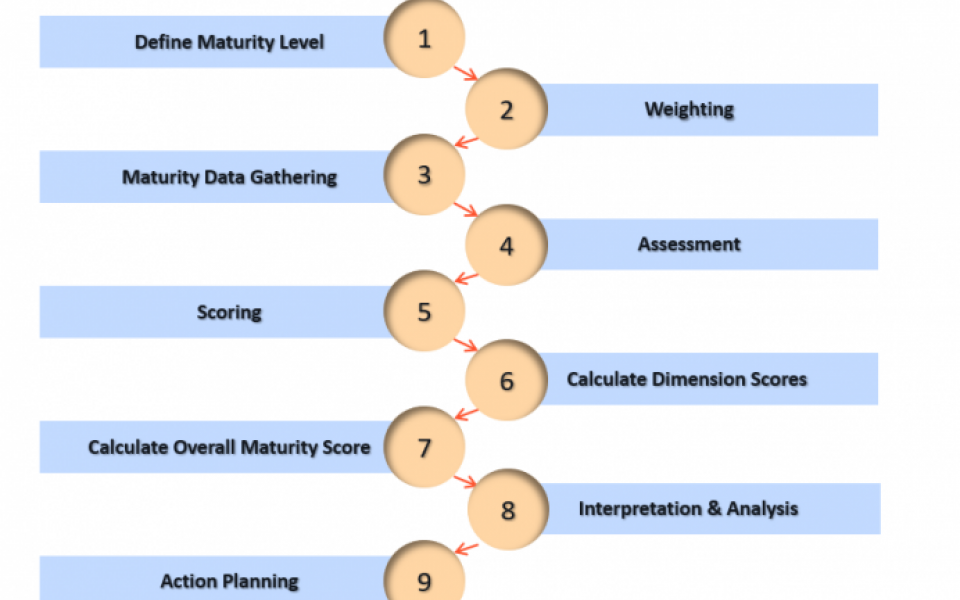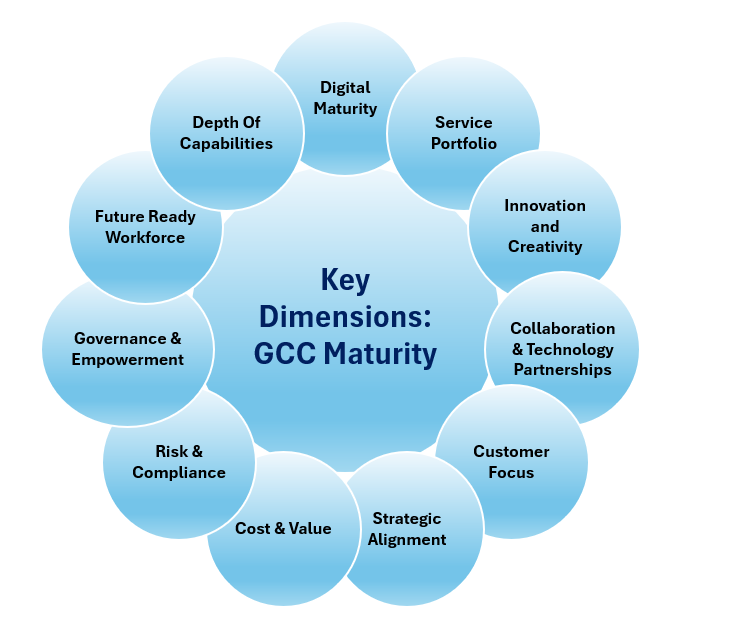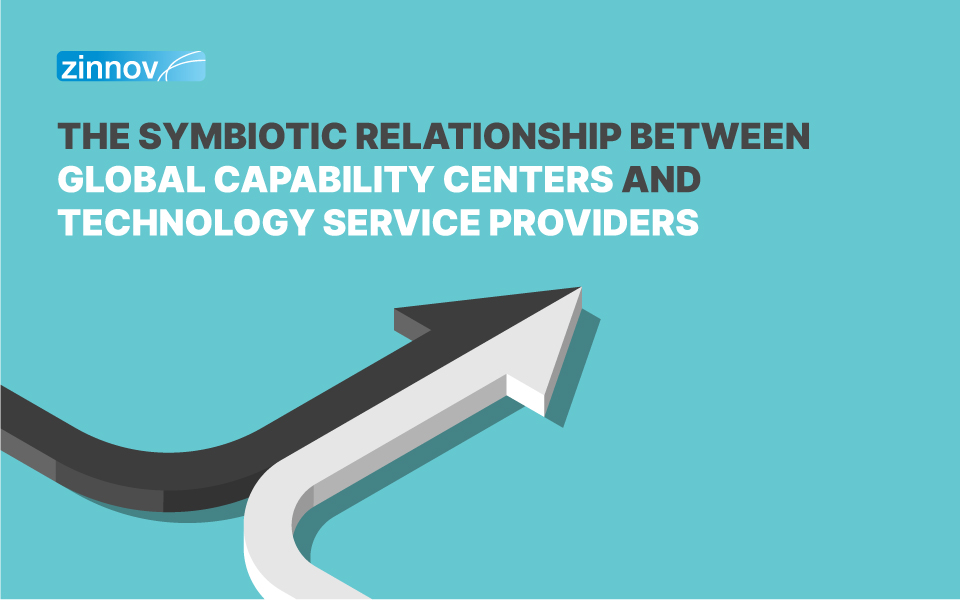In today's rapidly evolving global business landscape, Global Capability Centers (GCCs) play a pivotal role in driving organizational growth, innovation, and competitiveness. However, to unleash their full potential, it's imperative for GCCs to embark on a journey of continuous improvement and strategic evolution. GCC maturity assessment serves as a strategic compass, providing insights into the current capabilities, strengths, and areas for enhancement within the organization. By systematically evaluating dimensions such as cost-effectiveness, alignment with strategic objectives, digital readiness, and talent management, GCCs gain a holistic understanding of their operational maturity. This introspection not only enables GCCs to benchmark themselves against industry peers but also empowers them to identify strategic priorities and chart a roadmap for advancement."
"Assessing GCC maturity isn't just a box-ticking exercise; it's a strategic imperative for organizations seeking sustainable growth and competitive advantage in today's dynamic marketplace. A comprehensive maturity assessment equips GCCs with actionable insights to optimize processes, mitigate risks, and capitalize on emerging opportunities. Armed with a clear understanding of their current maturity level vis-à-vis industry benchmarks, GCCs can strategically allocate resources, prioritize investments, and drive targeted initiatives to elevate their performance to the next level. Furthermore, by fostering a culture of continuous improvement and innovation, GCCs can stay agile and resilient in the face of evolving market demands, positioning themselves as strategic partners driving value creation for their parent organizations.
Below is a comprehensive strategic framework to assess GCC’s maturity:
- Define Maturity Levels:
Define maturity levels for each maturity dimension, such as Novice, Beginner, Intermediate, Advanced & Expert. Assign specific characteristics and criteria to each level within every dimension.
- Weighting:
Assign weights to each dimension based on its importance to the overall goals and objectives of the GCC. The weighting reflects the relative significance of each dimension in contributing to the GCC's maturity.
- Maturity Data Gathering:
Collect relevant data for each dimension through various sources such as documentation, performance metrics, stakeholder interviews, surveys, and assessments.
- Assessment:
Evaluate the maturity level of the GCC for each dimension based on the collected data. Use the predefined criteria and characteristics to determine where the GCC falls within each dimension.(0-60% (Novice) , 60-70%(Beginner) , 70-80%(Intermediate) , 80-90%(Advanced), >90%(Expert))
- Scoring:
Assign a numerical score to each maturity level within each dimension. For example, you can use a scale of 1 to 5, with 1 representing the lowest maturity level and 5 representing the highest.

- Calculate Dimension Scores:
Multiply the score of each maturity level within a dimension by its corresponding weight. Sum up these weighted scores for each dimension to calculate the dimension scores.

- Calculate Overall Maturity Score:
Sum up the dimension scores to obtain the overall maturity score for the GCC. This score represents the comprehensive assessment of the GCC's maturity across all dimensions.

- Interpretation and Analysis:
Analyze the overall maturity score and dimension scores to identify strengths, weaknesses, opportunities, and threats. Compare the scores with previous assessments and industry benchmarks to gain insights into the GCC's performance and progress.
- Action Planning:
Develop actionable recommendations and initiatives based on the assessment findings to address gaps, capitalize on strengths, and improve overall maturity. Prioritize actions based on their impact and feasibility of implementation.
- Continuous Improvement:
Implement the action plans and monitor progress regularly. Conduct periodic reassessments to track improvements, adjust strategies, and ensure continuous enhancement of GCC maturity.
Let's explore (through an example) the diverse range of performance metrics, KPIs, and assessments that can be collected to gauge the most crucial "maturity" dimensions within a typical GCC setup.
Key Dimension1: Cost & Value
1. Cost Efficiency: To what extent does the GCC optimize operational costs while maintaining service quality and delivery timelines?
2. Value Contribution: How well does the GCC demonstrate tangible value addition to the parent organization in terms of cost savings, innovation, or strategic impact?
3. Resource Utilization: How effectively does the GCC allocate and utilize resources to maximize output and efficiency.
4. Cost Visibility: To what extent is there clear visibility and transparency in cost structures and financial performance within the GCC?
5. Benchmarking and Optimization: How regularly does the GCC benchmark its costs against industry standards and implement optimization strategies?"
Key Dimension2: Alignment with Strategic Objectives of Parent Organization
1. Strategic Goal Alignment: To what extent are the activities and objectives of the GCC aligned with the broader strategic goals of the parent organization?
2. Strategic Input Integration: How actively does the GCC incorporate strategic inputs from the parent organization into its planning and decision-making processes?
3. Contribution to Business Strategy: How much impact does the GCC have on shaping and influencing the overall business strategy of the parent organization?
4. Communication of Alignment: How effectively does the GCC communicate its alignment with the parent organization's strategic objectives to internal and external stakeholders?
5. Adaptability to Strategic Changes: To what extent can the GCC adapt its operations and strategies to align with changes in the strategic direction of the parent organization?
Key Dimension3: Risk & Compliance
1.Risk Management Framework: How well-established and effective is the risk management framework within the GCC, considering operational, financial, and compliance risks?
2.Compliance Adherence: To what extent does the GCC adhere to regulatory compliance requirements relevant to its operations and industry?
3.Risk Mitigation Strategies: How actively does the GCC implement strategies to mitigate identified risks, ensuring business continuity and resilience?
4.Compliance Monitoring: How regularly is compliance monitored and reported within the GCC, including internal and external audits?
5.Crisis Response Preparedness: How well-prepared is the GCC to respond to unexpected crises or disruptions, and what measures are in place for quick recovery?
Key Dimension4: Governance & Empowerment
1. Governance Structure: How well-defined and effective is the governance structure within the GCC, ensuring accountability and transparency?
2. Decision-Making Empowerment: To what extent are employees empowered to make decisions aligned with their roles and responsibilities within the GCC?
3.Stakeholder Involvement: How actively are stakeholders, both internal and external, involved in the decision-making processes of the GCC?
4. Communication of Governance Practices: How effectively does the GCC communicate its governance practices and principles to internal and external stakeholders?
5.Continuous Improvement Culture: To what extent is there a culture of continuous improvement in governance practices within the GCC?
Key Dimension5: Future Ready Workforce
1. Skills Development Programs: How actively does the GCC invest in and implement programs to develop skills that align with future industry trends and requirements?
2. Talent Retention Strategies: To what extent does the GCC implement strategies to retain and attract top talent in alignment with future business needs?
3. Adoption of Emerging Technologies: How well does the GCC encourage and facilitate the adoption of emerging technologies within its workforce?"
4. Diversity and Inclusion Initiatives: To what extent does the GCC prioritize diversity and inclusion initiatives to build a workforce reflective of global perspectives?
5. Succession Planning: How actively does the GCC engage in succession planning to ensure a smooth transition of leadership and key roles in the future?
Key Dimension6: Depth of Capabilities
1.Skill Specialization: To what extent does the GCC possess specialized skills and capabilities that differentiate it within the industry?
2.Innovation in Capabilities: How innovative are the capabilities developed and maintained by the GCC, contributing to a competitive edge?
3.Cross-Functional Expertise: To what extent does the GCC foster cross-functional expertise, enabling seamless collaboration across different capabilities?
4.Continuous Capability Enhancement: How actively does the GCC invest in enhancing and expanding its capabilities to meet evolving industry demands?
5. Capability Benchmarking: How regularly does the GCC benchmark its capabilities against industry standards and adapt strategies for improvement?
Key Dimension7: Digital Maturity
1.Technology Integration: To what extent are advanced technologies such as AI, IoT, and analytics integrated into the operations and services provided by the GCC?
2.Digital Transformation Initiatives: How actively does the GCC engage in initiatives aimed at digital transformation, leveraging technology for efficiency and innovation?
3.Data-Driven Decision-Making: To what extent does the GCC base its decisions on data analytics and insights, fostering a culture of data-driven decision-making?
4.Cybersecurity Measures: How robust are the cybersecurity measures and protocols in place to protect digital assets and sensitive information? 5.Adaptability to Emerging Technologies: How well-prepared is the GCC to embrace and adapt to emerging technologies that may impact its industry in the future?
Key Dimension 8: Service Portfolio
1. Diversity of Services: How diverse and comprehensive is the range of services offered by the GCC to meet the needs of various stakeholders? 2. 2.
2. Innovation in Service Delivery: To what extent does the GCC innovate in the delivery of its services, providing unique value to clients and internal stakeholders?
3. Strategic Alignment of Services: How well-aligned are the services offered by the GCC with the strategic objectives of the parent organization?
4. Client Satisfaction and Feedback: How actively does the GCC collect and utilize client feedback to enhance and optimize its service portfolio?
5. Market Relevance of Services: To what extent are the services offered by the GCC aligned with market trends and demands, ensuring relevance and competitiveness?
Finally we have reached...

it's clear that establishing a structured approach to assessing and advancing the maturity of Global Capability Centers is essential for organizations striving to remain competitive and innovative in today's dynamic business landscape. By leveraging the insights and guidance provided by the GCC maturity framework, organizations can navigate their journey towards excellence with clarity and purpose.
Thank you!





















